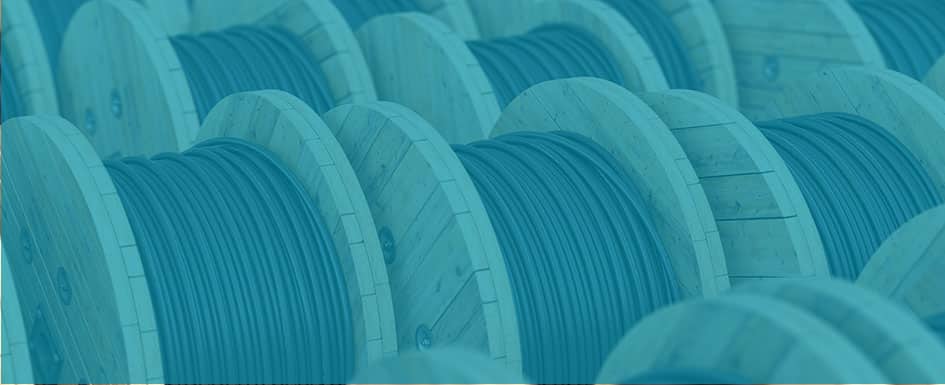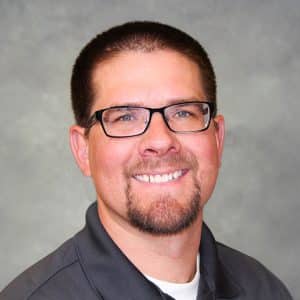

VFD Cable Selection and Grounding Considerations for Large Industrial Motors
By Brian Literski, PE
Variable Frequency Drives (VFDs) are essential components that control the speed of process equipment. They are used with pumps, blowers, or other motor-driven equipment required to run at variable speeds or loads.
For some industrial projects that use process equipment, a motor’s horsepower requirements can be up to hundreds of horsepower on a 480V power distribution system. Since VFD output cabling provides the connection from the VFD to the process equipment motor, it is good practice to choose a cable that enhances the system’s performance. Selecting the right VFD cable for your project can alleviate some of the common issues VFDs can create.
On the other hand, VFD cable rated up to 1000V or 2000V (depending on the type specified) includes higher-grade insulation with three symmetrical grounds. This type of cable offers the proper shielding needed to reduce EMI/RFI noise by providing a low-impedance signal return path that prevents common-mode or stray voltage.
Why VFD Cable vs. Building Wire?
Using building wire, like THHN/THWN, creates a risk for insulation failure caused by the high voltage spikes (greater than 600V) and the corona discharge responsible for damaging the jacket and/or insulation that a VFD can produce on conductors between the VFD and the motor. The standard THHN/THWN wire used on building electrical systems is rated only for use with 600V applications and is more susceptible to insulation breakdown on the output of a VFD.
On the other hand, VFD cable rated up to 1000V or 2000V (depending on the type specified) includes higher-grade insulation with three symmetrical grounds. This type of cable offers the proper shielding needed to reduce EMI/RFI noise by providing a low-impedance signal return path that prevents common-mode or stray voltage. The insulation rating on VFD cable is rated above the VFD output voltage spikes which are normally 1.7 times or more of the system voltage of 480V, so roughly 831V. The insulation in VFD cable is not strained like 600V rated THHN/THWN as it is rated above the voltage spikes. VFD cable protects against premature cable failure.
Code Issues Using VFD Cable on Large Motors
If process equipment gets into the hundreds of horsepower, multiple parallel cables are required to meet the ampacity requirement of the motor’s full load current. When running multiple paralleled conductors, the equipment ground needs to be upsized to provide an adequate return path should a fault occur. The issue with VFD cable ground conductors on large equipment is with the cross-sectional area of the three-symmetrical grounding conductors; because they won’t meet the National Electric Code (NEC) requirements when placed in a parallel configuration (see NEC Table 250.122). The three-symmetrical ground conductors are fixed sizes based on the phase conductors.
Fortunately, two methods can correct this issue:
- Method 1 includes upsizing the phase conductors until the ground conductor size is adequate in the VFD cable.
- Method 2 includes using properly sized VFD cabling for the phase conductors and installing an additional equipment ground conductor as required in NEC 250.122 (F).
With Method 1, the cost of upsizing the phase conductors in a cable can become so large that economic and installation issues make it less favorable or non-feasible. Method 2, on the other hand, includes an extra equipment ground wire in all the parallel conduit runs—and is allowed as per NEC 250.122 (F).
Method 2 is by far the preferred approach because the cost of including only one extra equipment ground conductor per paralleled conduit (sized according to Table 250.122) is much more economical than upsizing three-phase conductors to meet the minimum equipment grounding cross-sectional area requirement.

The cross-sectional area of the grounding conductors in Figure 1—when run in parallel to large motors —does not satisfy the NEC Table 250.122 requirements. An additional properly sized equipment grounding conductor (run with each VFD cable in parallel conduits) is required to fulfill NEC’s installation methods.
Next Steps
NEC requirements, like this example of equipment grounding conductor sizing, must be followed to provide a safe, code-compliant industrial electrical system. Since all electrical distribution system requirements can vary depending on the project, it’s best to look at each project on a case-by-case basis. I’m always available to discuss your project’s system needs. Call or email me with questions about your system needs or designs.
Learn more and ask questions
